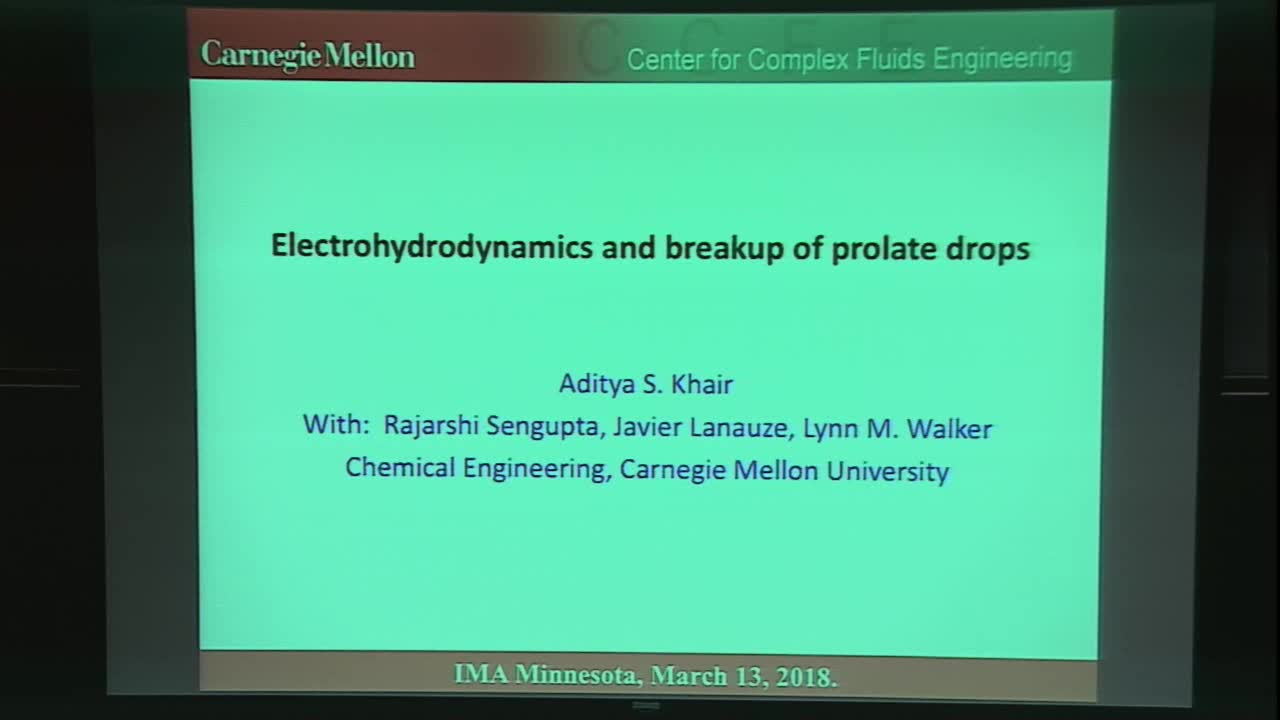Electrohydrodynamics and breakup of prolate drops
Presenter
March 13, 2018
Keywords:
- Electrohydrodynamics; Drops; Breakup; Colloid
Abstract
The deformation of a weakly conducting, "leaky dielectric," prolate drop in a density matched, immiscible weakly conducting medium under a uniform DC electric field is analyzed. Using boundary integral computations, we delineate drop deformation and breakup regimes in the Ca_E-Re_E parameter space, where Ca_E is the electric capillary number (ratio of the electric to capillary stresses); and Re_E is the electric Reynolds number (ratio of charge relaxation to flow time scales), which characterizes the strength of surface charge convection along the interface. For so-called prolate-A drops, where the surface charge is convected towards the ‘poles’ of the drop, increasing Re_E reduces the critical capillary number for breakup. Moreover, surface charge convection is the cause of an abrupt transition in the breakup mode of a drop from end pinching, where the drop elongates and develops bulbs at its ends that eventually detach, to a breakup mode characterized by the formation of conical ends. On the contrary, the deformation of prolate-B drops, where the surface charge is convected away from the poles, is essentially unaffected by the magnitude of Re_E. Finally, we experimentally examine the breakup of an oil drop containing a colloidal suspension of carbon black particles and varying amounts of surfactant. Depending on the amount of added surfactant, and hence the suspension stability, the drop achieves radically different breakup conformations under an electric field.
